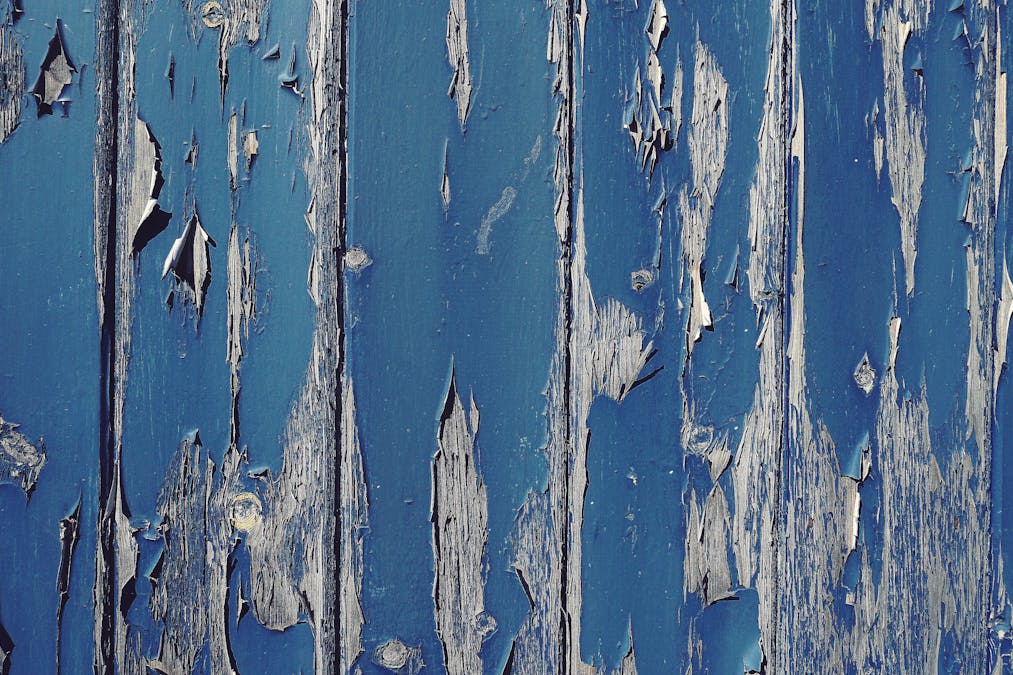How Weather Affects the Lifespan of Exterior Paint in Whitby Homes

Is Your Home’s Exterior Ready for Whitby Weather?
How weather affects the lifespan of exterior paint is something every Whitby homeowner should understand — especially in a region known for its unpredictable conditions. From icy winters to humid summers and wild temperature swings between seasons, Whitby’s climate is tough on exterior surfaces.
But your home’s exterior paint does more than just make your house look good. It acts as a protective shield — sealing out moisture, resisting UV damage, and defending against everyday wear. When the weather takes its toll, that protective barrier weakens, putting your home’s structure at risk.
In this post, we’ll explore:
- The science behind how weather breaks down exterior paint
- The unique challenges Whitby’s climate presents
- Signs your paint may already be weather-damaged
- Practical seasonal paint care tips to help you extend your paint’s lifespan
- Why working with a professional painter is the smart move for long-term protection
Let’s start with how the elements work against your exterior, one season at a time.
The Science Behind Exterior Paint Wear
Understanding how weather affects the lifespan of exterior paint starts with the basic science of how paint responds to environmental stress. Exterior paint may look solid and strong, but it’s constantly expanding, contracting, and degrading under nature’s pressure. Let’s take a closer look at the key weather elements that cause wear over time.
UV Exposure & Fading
Ultraviolet (UV) rays from the sun are one of the biggest threats to exterior paint. Over time, UV radiation breaks down the chemical bonds in paint pigments, especially on walls that face south and west, where sunlight is strongest throughout the day.
The result?
- Color fading
- Chalking (a powdery residue that appears on the surface)
- Brittleness, which can lead to cracking and peeling
Even high-end paints can eventually succumb to long-term UV damage without proper maintenance.
Moisture Intrusion from Rain, Snow & Ice
In climates like Whitby’s, where snowfall and rain are frequent, moisture is a major culprit in premature paint failure. Water can seep into small cracks or unsealed edges, leading to:
- Blistering or bubbling as water gets trapped under the surface
- Peeling when layers lift away from the substrate
- Mold and mildew growth, especially in shaded, poorly ventilated areas
Add in sudden cold snaps, and the paint film expands and contracts, further stressing the finish and creating weak spots.
Wind and Abrasive Debris
Strong winds — common in coastal and open areas around Whitby — carry dust, sand, and other debris that scrape against the painted surface. This constant abrasion:
- Wear down protective coatings
- Roughens surfaces, making them more susceptible to water and UV damage
- Can shorten the lifespan of even durable paints
Over time, the outer coat becomes more vulnerable to everything else the weather throws at it.
Whitby’s Climate: What Makes It Tough on Paint
When it comes to the climate impact on exterior paint, Whitby presents a unique mix of challenges. With weather that can swing from snowy and damp to hot and humid — sometimes within the same week — your home’s paint job faces year-round pressure. Here’s how local climate conditions wear down exterior surfaces faster than you might think.
Freeze-Thaw Cycles
In the spring and fall, Whitby often experiences wide temperature fluctuations between day and night. This creates freeze-thaw cycles that are especially hard on exterior paint.
What happens:
- Paint and building materials expand in the heat and contract in the cold
- Repeated expansion and contraction stress the paint film
- Eventually, this causes cracking, splitting, or delamination of the paint surface
Even minor cracks let moisture in, compounding the damage as temperatures drop again.
High Humidity in Summer
Summers in Whitby can be muggy and damp, and that excess moisture in the air is rough on painted surfaces.
Effects of high humidity include:
- Softened paint film, which may sag or cure improperly
- Increased mildew and algae growth on shaded or poorly ventilated walls
- Longer drying times, making the surface more prone to dirt or dust sticking
These conditions also limit the optimal windows for exterior painting — something pros carefully plan for.
Harsh Winter Salt & Ice
While salt is necessary for road safety during Whitby’s snowy winters, it’s tough on your home’s exterior, especially at ground level.
- Salt spray from plows or sidewalks accelerates paint corrosion
- Ice can form near the foundation, damaging trim, siding, and sealants
- Water trapped by snowdrifts can freeze, expand, and push paint away from surfaces
Homes near roadways or sidewalks tend to experience these issues the most.
Signs Your Exterior Paint Has Weather Damage
Exterior paint won’t last forever, especially in a climate like Whitby’s. The good news? Your home will start to show visual clues when it’s time to take action. Here are the most common signs that the weather has taken its toll and your home might be due for a professional repaint.
Peeling or Bubbling Paint
One of the most obvious signs of weather-related damage is peeling or bubbling paint. These problems typically indicate that:
- Moisture has gotten beneath the paint surface
- The paint is no longer adhering properly to the substrate
- Blisters may form, then pop, leaving behind unprotected patches
Left untreated, these areas quickly worsen and can lead to structural issues like wood rot or siding damage.
Fading, Dullness, or Chalking
Have you noticed that your once-bold paint color now looks flat or washed out? That’s usually the result of prolonged sun exposure and UV damage. Signs to look for:
- Color fading, especially on sun-facing walls
- Dull or uneven finish
- A white, powdery residue when you rub the surface (known as chalking)
These are clear indicators that the paint’s protective abilities have been compromised.
Wood Rot or Exposed Siding
If the paint is worn away completely or peeling in large sections, the underlying materials — like wood trim or siding — become vulnerable.
Look for:
- Dark, soft spots on wood surfaces
- Visible gaps or cracks in trim or caulking
- Exposed or flaking siding materials beneath worn paint
These signs often point to moisture infiltration and should be addressed promptly by a professional to prevent further damage.
Seasonal Paint Care Tips to Extend Paint Lifespan
While you can’t control Whitby’s weather, you can take steps to protect your home’s paint job from the elements. With consistent upkeep and timely maintenance, your exterior paint can stay vibrant and protective for years to come. Here’s how seasonal paint care plays a key role in prolonging paint life.
Spring/Fall Inspections
Get in the habit of walking around your home each spring and fall to assess the condition of your exterior surfaces.
Focus on:
- Window and door trim
- Baseboards and siding near the foundation
- Soffits, fascia, and roofline areas
- Garage doors and frames
These areas are most exposed to moisture and temperature fluctuations, making them more susceptible to early wear.
Gentle Cleaning to Remove Mildew and Salt
Over time, dirt, mildew, and salt deposits can degrade your paint’s surface and appearance. Seasonal cleaning helps prevent buildup and keeps your home looking its best.
However, not all cleaning methods are safe for painted surfaces, especially when mildew or salt is involved. Instead of tackling this alone, consider working with a professional who can clean your exterior safely without damaging the paint or substrate.
Regular Repainting Schedule by Professionals
Even the best paints have a lifespan. In Whitby, most homes benefit from repainting every 5–8 years, depending on the material, exposure, and paint quality.
A professional painter will:
- Evaluate the current paint condition
- Recommend the right products based on your home’s material and microclimate
- Apply high-performance coatings with expert technique and timing
Regular repainting not only maintains curb appeal, it preserves your home’s structural integrity.
Why Professional Painting Makes a Difference
You could choose to wait until paint damage becomes unavoidable — or you could work with a professional to stay ahead of the elements. When it comes to protecting your home and maximizing paint performance, expertise makes all the difference.
Expertise in Local Climate Conditions
Professional painters in Whitby understand the specific weather challenges your home faces — from freeze-thaw cycles to salty slush and high humidity.
They know how to:
- Schedule projects during optimal weather windows
- Choose paint formulations that resist local stressors
- Apply products with techniques that ensure better adhesion and longevity
Use of High-Performance, Weather-Resistant Paints
Not all paint is created equal. Pros use premium products designed for durability, including:
- UV-resistant paints to minimize fading
- Moisture-blocking primers and sealers
- Mildew- and mold-resistant finishes for humid environments
These products provide longer protection and fewer touch-ups over time.
Preventive Maintenance Options
Beyond repainting, many professionals offer seasonal services like:
- Spot touch-ups in high-wear areas
- Sealant and caulking reapplication
- Moisture damage checks and early repairs
This proactive care can extend the life of your paint job and help you avoid bigger repair bills down the road.
Protect Your Home from the Elements — Professionally
Whitby’s weather isn’t easy on homes, and understanding how weather affects the lifespan of exterior paint is the first step to keeping yours looking great and staying protected.
From UV rays that fade color to moisture that causes peeling and rot, your home’s exterior faces constant stress. Add in local climate factors like freeze-thaw cycles, summer humidity, and winter salt, and it’s clear: exterior paint does a lot of heavy lifting.
The good news? With regular seasonal paint care, timely inspections, and help from a professional painting team, you can extend the life of your paint and protect your home for years to come.
Need a fresh start or just some expert advice?
Book a free exterior consultation to learn how we can help your home weather the seasons in style.


